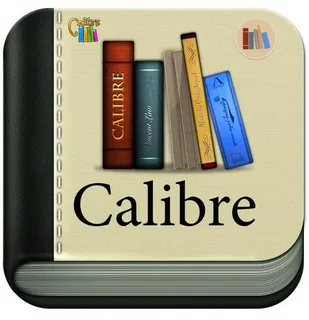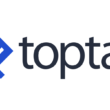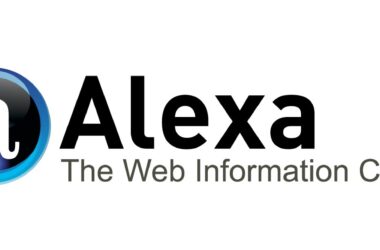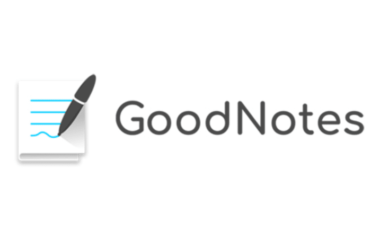In the ever-evolving realm of digital library management, the spotlight often falls on calibre as a stalwart companion for book enthusiasts. Yet, as diverse needs emerge, the quest for the perfect alternative becomes paramount. Join us on an expedition through the digital bookshelves as we explore the intricacies of calibre alternative, unveil a lineup of noteworthy alternatives, and guide you towards the perfect match for your literary haven.
Features And Limitation Of Calibre

While Calibre boasts a comprehensive set of features for seamless eBook management, it is important to consider certain limitations that users may encounter in their digital library journey.
Features of Calibre
- Comprehensive Library Management: Calibre provides an intuitive and feature-rich platform for organizing and categorizing your digital book collection. Its robust library management system ensures easy navigation and accessibility.
- Format Conversion Capabilities: One of the standout features of Calibre is its ability to convert eBooks into various formats. This ensures compatibility with a wide range of devices, allowing users to enjoy their digital library on different platforms seamlessly.
- Effortless Sync Across Devices: Calibre facilitates seamless synchronization of your eBook collection across multiple devices. Whether you’re switching between your e-reader, tablet, or smartphone, your library stays up-to-date, ensuring a consistent reading experience.
- User-Friendly eBook Editing: The platform allows users to make annotations, add cover art, and edit metadata for a personalized touch. This feature enhances the overall aesthetic and customization of your digital bookshelf.
- Open-Source Customization: Calibre’s open-source nature distinguishes it from other eBook management tools. This allows users to customize and extend its functionalities, fostering a community-driven environment of continuous improvement.
Limitations of Calibre
- Complex User Interface: While feature-rich, Calibre’s user interface can be overwhelming for newcomers. The learning curve might be steeper for those not accustomed to the intricacies of eBook management.
- Resource Intensiveness: Calibre, at times, may consume significant system resources. This can lead to slower performance on less powerful machines, impacting the user experience.
- Limited Cloud Integration: For users heavily reliant on cloud storage, Calibre’s integration options may feel restrictive. The platform’s capabilities in syncing with cloud services might not match the expectations of users seeking more extensive cloud functionality.
- Format Compatibility Challenges: While Calibre excels in format conversion, some users may encounter challenges with specific eBook formats. Ensuring compatibility with less common or proprietary formats may require additional effort.
- Continuous Learning Curve: Given the frequent updates and additions to Calibre’s features, users may find themselves on a continuous learning curve. Staying abreast of the latest functionalities and improvements could be essential for maximizing the platform’s potential.
What Sets calibre Apart: The Unique Choreography
In the intricate dance of eBook management, what truly sets Calibre apart is its captivating open-source nature, positioning itself center stage in the digital literary ballet. This unique characteristic empowers users with the freedom to customize and extend the functionalities of the platform, creating a dynamic and tailored experience that resonates with individual preferences. Moreover, the performance is elevated by a dedicated community that seamlessly integrates plugins into the routine, enriching the overall choreography of the digital library experience. This collaborative effort ensures that each user benefits not only from the core features of Calibre but also from the continuous enhancements contributed by the passionate community, making every interaction with the platform a harmonious and ever-evolving performance
The Need for a calibre Alternative: A Quest for Diversity

In the intricate tapestry of digital library management, the quest for a calibre alternative unfolds as a dynamic journey—a quest for diversity—where individual preferences and needs guide users towards tailored alternatives that enrich and personalize their digital reading experiences.
1. Diverse User Preferences and Needs: Unveiling Individual Literary Aspirations
Within the vast landscape of digital library management, users bring a myriad of preferences and needs to the forefront. This section aims to unveil the intricate tapestry of individual literary aspirations that drive the quest for a calibre alternative. From the desire for a more intuitive user interface to specific requirements in resource efficiency, understanding the nuanced factors that influence user preferences becomes essential. By delving into this diversity, we can better appreciate the multifaceted motivations guiding users towards alternatives that align seamlessly with their unique expectations, creating a digital reading haven tailored to individual tastes.
2. Beyond the Calibre Horizon: Exploring the Limitations and Unique Features of calibre
To embark on a meaningful quest for a calibre alternative, a thorough exploration of both the limitations and unique features of calibre itself becomes imperative. This section serves as a compass, navigating through the intricate landscape of calibre’s strengths and weaknesses. By dissecting the platform’s capabilities and constraints, users gain profound insights into the aspects that might propel them beyond the familiar territory of calibre. Whether it’s the need for a more streamlined interface or enhanced cloud integration, understanding these dynamics lays the foundation for informed decision-making in the pursuit of an alternative that perfectly aligns with individual preferences.
3. Emerging Trends in Digital Library Management: Adapting to Evolving User Expectations
The digital realm is ever-evolving, and so are the expectations of users in the domain of digital library management. This subheading unfolds the pages of emerging trends, considering factors such as seamless cloud integration, user-friendly interfaces, and evolving functionalities. By keeping a keen eye on these trends, users can navigate the dynamic landscape of digital reading, ensuring that their chosen calibre alternative not only meets current expectations but also stands resilient in the face of future developments. This section acts as a compass, guiding users toward alternatives that effortlessly adapt to the shifting tides of technology, enhancing the overall digital literary experience.
4. Customization and Flexibility: Seeking Tailored Solutions for Unique Reading Experiences
The pursuit of a calibre alternative extends beyond functionality; it encompasses the quest for customization and flexibility. This section is an exploration into the profound importance of finding alternatives that offer not only a breadth of features but also the adaptability to align with individual reading habits and preferences. Users are on a quest for alternatives that serve as versatile companions, capable of molding themselves to match the intricacies of personal reading preferences. Understanding how alternatives cater to diverse user needs in terms of customization sets the stage for a more personalized and gratifying digital literary journey, where every page turn is a reflection of the reader’s unique literary fingerprint.
Commonly Used Calibre Alternatives For Enhanced Digital Library Management

In the vast universe of digital library management, users seeking alternatives to Calibre are presented with a diverse array of options, each catering to specific needs and preferences. Let’s delve into a comprehensive exploration of ten commonly used Calibre alternatives, unraveling the distinct features and advantages that set each apart in the realm of enhanced digital library management.
1. BookFusion: Cloud-Based Symphony
BookFusion steps into the spotlight with a harmonious cloud-based symphony, offering users seamless synchronization across devices. Its intuitive interface orchestrates a symphony of simplicity, making it a contender for those who prioritize accessibility and synchronization in their digital literary endeavors. As your literary ensemble takes center stage, BookFusion ensures that every note resonates across the cloud.
2. Alfa eBooks Manager: Maestro of Organization
For those yearning for a maestro in library organization, Alfa eBooks Manager takes the lead. With its comprehensive format compatibility, it conducts a symphony of order and accessibility, ensuring that every book finds its place in a meticulously organized repertoire. The maestro’s baton guides users through a harmonious experience, where the organization becomes an art in itself.
3. FBReader: Lightweight Melody
In the realm of lightweight melodies, FBReader emerges as a sonnet for resource efficiency. Its nimble presence on various platforms and support for numerous eBook formats creates a melody of versatility. Users can enjoy the lyrical experience of reading without the burden of resource-intensive processes, making FBReader a preferred choice for those seeking simplicity without sacrificing functionality.
4. Kobo: Integrated Overture
The integrated overture of Kobo resonates with users looking for a comprehensive eBook store experience. As the overture unfolds, users are immersed in a vast selection of literary works, and Kobo’s cross-device syncing acts as a crescendo, ensuring a consistent reading performance across the literary stage. Kobo’s symphony is one where the rhythm of discovery and synchronization plays in perfect harmony.
5. Icecream Ebook Reader: Cool Rhythms
Icecream Ebook Reader dances onto the stage with cool rhythms, offering an intuitive interface and customizable reading experience. The performance includes a refreshing breeze of library management, adorned with book covers and metadata editing. Icecream Ebook Reader’s cool rhythms ensure that the dance of personalization and ease becomes a delightful experience in the world of digital reading.
6. Calibre Companion: On-the-Go Pas de Deux
For those seeking an on-the-go pas de deux with Calibre, Calibre Companion twirls into view. This companion app seamlessly connects, ensuring access and management of eBooks wherever your literary adventures take you. The pas de deux becomes a dance of accessibility and convenience, where the performance extends beyond the confines of a single device.
7. BiblioteQ: Librarian’s Waltz
BiblioteQ takes the lead in the librarian’s waltz, catering to libraries and institutions with its advanced cataloging and database features. The performance is characterized by a choreography of meticulous cataloging, ensuring that extensive book collections are managed with finesse. BiblioteQ’s waltz becomes an elegant dance of organization in the grand library ballroom.
8. Lucidor: Simplicity Tango
In the simplicity tango, Lucidor gracefully glides onto the scene. As an open-source eBook reader, it champions simplicity while supporting EPUB and OPDS formats. The tango is one where the dance of openness and ease takes precedence, offering users a straightforward yet elegant experience in the world of digital reading.
9. Moon+ Reader: Lunar Flourish
With a lunar flourish, Moon+ Reader enters the literary stage, offering a highly customizable reading experience. The moonlit performance includes multilingual support and diverse theme options, making it a celestial choice for those seeking a personalized and visually rich literary voyage. Moon+ Reader’s lunar flourish ensures that the reading experience is not just functional but also visually enchanting.
10. Adobe Digital Editions: Adobe Overture
Rounding up our ensemble, Adobe Digital Editions takes center stage with an Adobe overture. As an eBook reader with robust support for EPUB and PDF formats, it seamlessly integrates with Adobe’s eBook store and libraries. The overture becomes a performance where compatibility and integration play in harmony, creating a seamless experience for users within the Adobe literary ecosystem.
Factors To Consider While Choosing The Perfect calibre Alternative
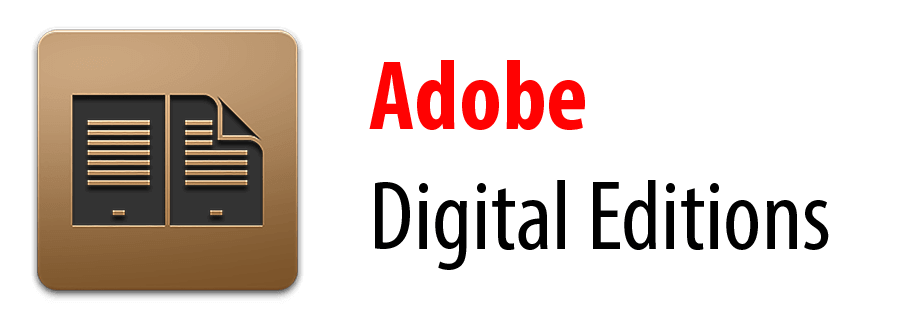
In the intricate dance of selecting the ideal calibre alternative, a careful consideration of these factors becomes the compass guiding users through the nuanced choreography of digital library management, ensuring a harmonious and tailored experience.
1. User-Friendly Interface: The Dance Floor Harmony
Selecting the perfect calibre alternative initiates with the consideration of a user-friendly interface, creating the dance floor harmony crucial for an enjoyable digital library experience. A seamlessly designed interface ensures that users can effortlessly navigate through their literary collections, perform tasks, and explore features without feeling entangled in a complex choreography. The perfect alternative should be an inviting stage, where every user, regardless of their technical prowess, can waltz through their digital library with ease, turning the process of book management into a delightful dance.
2. Resource Efficiency: Balancing Act
In the grand dance of digital libraries, the factor of resource efficiency becomes a delicate balancing act. Choosing the perfect calibre alternative involves considering how gracefully the software manages resources, ensuring optimal performance without burdening devices with excessive demands. The ideal alternative orchestrates a performance where the dance between functionality and resource efficiency is harmonious, allowing users to enjoy a smooth and responsive reading experience without the cumbersome weight of resource-intensive processes.
3. Cloud Integration: Synchronized Ballet
For those yearning for a synchronized ballet of eBooks across devices, evaluating the alternative’s prowess in cloud integration is paramount. The perfect calibre alternative should perform a synchronized ballet, allowing users to seamlessly access and manage their digital libraries across various platforms. This factor ensures that the dance of digital reading is not confined to a single stage but extends across the vast expanse of cloud storage, offering users the flexibility and convenience of synchronized access to their literary treasures.
4. Format Compatibility: Melody in Harmony
Ensuring that the alternative’s melody is in harmony with one’s eBook format preferences becomes a crucial consideration. The perfect calibre alternative should be capable of performing a melody that resonates with a diverse range of eBook formats, creating a harmonious reading experience. Users should feel that their chosen alternative effortlessly dances through the various formats, ensuring compatibility and a seamless transition between different literary compositions. This factor ensures that the dance of digital reading remains a melodious experience, free from the dissonance of format compatibility issues.
5. Community Support: Applause from the Audience
As any good performance requires an appreciative audience, the perfect calibre alternative should receive applause in the form of active community support. An engaged community indicates ongoing development, support, and the potential for continuous improvement. Users should seek an alternative where the dance of digital library management is celebrated by a community that contributes plugins, offers solutions, and enhances the overall performance of the chosen software. This factor ensures that users are not alone on the dance floor, but surrounded by a supportive audience that appreciates and enriches the performance.
Conclusion: The Grand Finale
In this grand finale, we’ve explored the nuances of calibre, danced through the alternatives, and laid out the factors to consider in your pursuit of the perfect calibre alternative. Whether you opt for the simplicity tango of Lucidor or the cloud-based symphony of BookFusion, may your digital library experience be a captivating dance of literary delight.
.




